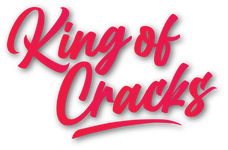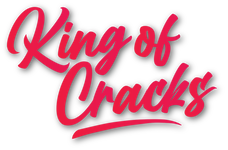|
As a chiropractor and tennis enthusiast, I've seen my fair share of tennis elbow cases. It's a painful and frustrating injury that can impact anyone who participates in activities that require repetitive arm movements. That's why I'm here to share with you the real cause of tennis elbow and provide you with practical tips to prevent it.
Firstly, let's define what tennis elbow is. Also known as lateral epicondylitis, tennis elbow is a painful condition that affects the outer part of the elbow. It's caused by repetitive stress on the tendons that attach to the lateral epicondyle, which is the bony bump on the outer part of the elbow. While it's often associated with tennis players, it can also affect people who engage in other activities that involve repetitive arm movements, such as painting, typing, and playing certain musical instruments. Now, let's discuss the real cause of tennis elbow. Contrary to popular belief, it's not solely caused by the sport of tennis itself. Rather, it's caused by repetitive microtrauma to the tendons in the forearm that attach to the lateral epicondyle. This microtrauma can be caused by any activity that involves repetitive wrist and arm movements, such as hitting a backhand in tennis or typing on a keyboard for long periods of time. So, how can you prevent tennis elbow? Here are some tips that I recommend:
In conclusion, tennis elbow is a common injury that can affect anyone who engages in activities that involve repetitive arm movements. While it's often associated with tennis, it can also be caused by other activities such as painting and typing. The real cause of tennis elbow is repetitive microtrauma to the tendons in the forearm that attach to the lateral epicondyle. To prevent this injury, it's important to warm up properly, use proper technique and form, strengthen your forearm muscles, consider physical therapy or chiropractic care, take breaks and rest when necessary, and invest in proper equipment. By following these tips, you can reduce your risk of developing tennis elbow and continue to participate in the activities you love. Keywords: tennis elbow, injury, prevention, cause, physical therapy, chiropractic care, exercise, sports References:
This blog post was written with the help of google search, research articles and the use of AI. For informational purposes only.
0 Comments
Leave a Reply. |
AuthorMy name is Jimmy Sayegh, DC, and I am a licensed chiropractic physician with over 10 years of experience. I believe that optimal health and wellness require a combination of factors, including exercise, a healthy diet, and routine chiropractic care. In my experience, regular exercise is essential for maintaining good health, as it can improve cardiovascular health, reduce the risk of chronic diseases, and help maintain a healthy weight. A balanced and nutritious diet is also crucial for optimal health, providing the body with essential nutrients needed for optimal functioning. In my blog posts, I will be sharing research articles and information that I have gathered over the years. All of my blogs are complied works from multiple research articles, journals, and my own personal opinions based on my clinical practice. Some of the blog articles have been drafted with the support of renowned entities such as Google, AI, scholarly publications, and peer blogs. Please note that these blogs are posted for informational purposes only. Archives
August 2023
CategoriesAll Age And Chiropractic Alkaline Water Athletics Breathing Bruxism Car Accidents Chronic Low Back Pain Cracking Sounds? Cupping Diet And Exercise Disc Herniations Endometriosis Gut Health Headaches Health And Wellness Hydration Infants And Children Knee Pain Magnesium Citrate Mental Health Myths Obesity And Genetics Opioid Crisis Osteoarthritis Pregnancy Pseudoscience? Sciatica Sleep Social Media Sports Injuries Strength Training Stretching & Exercise Sun Light Surgery Tinnitus TMJ & Jaw Pain Vit D And Calcium Whiplash Working From Home |
Home | Social Media | Pricing | Gift Cards | Press | Meet the King of Cracks | Contact | Podcast | My Blog | Privacy Practices
11879 Sebastian Way, Suite 103
Rancho Cucamonga, CA 91730
P: 909-989-6980
11879 Sebastian Way, Suite 103
Rancho Cucamonga, CA 91730
P: 909-989-6980
|
Copyright © 2024 Jimmy Sayegh DC | King of Cracks| Talking Crack Podcast. All Rights Reserved.
|

 RSS Feed
RSS Feed









